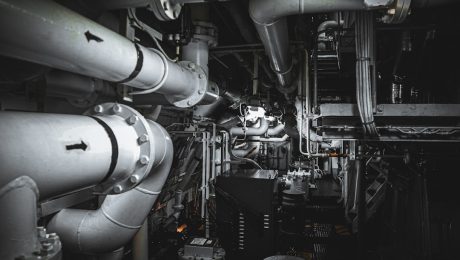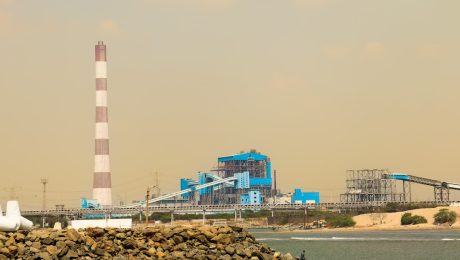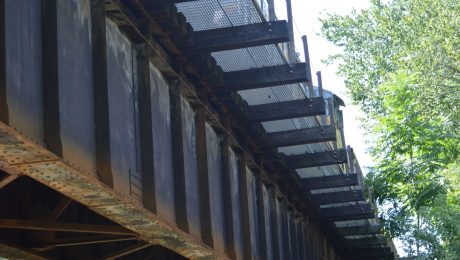body { font-family: sans-serif; line-height: 1.6; }
h1, h2, h3 { color: #333; }
img { max-width: 100%; height: auto; }
High-pressure pipelines are critical infrastructure for transporting various fluids, including oil, gas, water, and chemicals. The inherent risks associated with high-pressure systems demand rigorous safety protocols and meticulous attention to detail. This comprehensive guide delves into the key aspects of ensuring safety in high-pressure pipe operations.
1. Material Selection: The Foundation of High-Pressure Pipe Safety
The choice of pipe material is paramount. High-pressure applications demand materials with exceptional strength, durability, and resistance to corrosion and fatigue. Common materials include:
- Carbon Steel: Widely used due to its strength and cost-effectiveness, but susceptible to corrosion. Protective coatings and regular inspections are crucial.
- Stainless Steel: Offers superior corrosion resistance, making it suitable for aggressive fluids. However, it can be more expensive than carbon steel.
- Duplex Stainless Steel: Combines the strength of carbon steel with the corrosion resistance of stainless steel, ideal for demanding environments.
- High-Strength Low-Alloy Steel (HSLA): Provides a balance between strength and weldability, often used in large-diameter pipelines.
- Plastic Pipes (e.g., HDPE): Suitable for certain applications, particularly those involving non-corrosive fluids. Their flexibility offers advantages in certain terrains.
Material selection must consider the specific operating conditions, including pressure, temperature, fluid characteristics, and environmental factors. Proper material specification is the cornerstone of a safe and reliable pipeline system.
2. Regular Inspection and Maintenance: Preventing Catastrophic Failures
Proactive inspection and maintenance are vital for preventing failures. Regular inspections should include:
- Visual Inspections: Checking for signs of corrosion, damage, leaks, or deformation.
- Non-Destructive Testing (NDT): Techniques like ultrasonic testing (UT), radiographic testing (RT), and magnetic particle testing (MT) detect internal flaws and weaknesses.
- Pressure Testing: Periodic pressure testing verifies the pipeline’s ability to withstand operating pressures. This is crucial for identifying potential weaknesses before they lead to failure.
- Leak Detection Systems: Advanced systems can monitor pipeline pressure and flow rate, alerting operators to potential leaks promptly.
A comprehensive maintenance schedule, incorporating both preventative and corrective measures, should be meticulously followed. This includes cleaning, coating repairs, and timely replacement of damaged sections.
3. Pressure Testing Procedures: Ensuring Pipeline Integrity
Hydrostatic testing is the most common method for pressure testing pipelines. This involves filling the pipeline with water and pressurizing it to a predetermined level, exceeding the maximum operating pressure. The pipeline’s integrity is assessed by monitoring pressure changes and visually inspecting for leaks. Pneumatic testing, using compressed air, is also employed, but requires extra precautions due to the higher risk of explosion.
Before pressure testing, a thorough inspection should be conducted to ensure that all valves are properly closed and the pipeline is free of debris. During testing, pressure and temperature should be continuously monitored, and safety personnel should be present to manage any emergencies. Detailed records of the testing process, including pressure readings and observations, must be maintained.
4. Emergency Response Planning: Mitigation of High-Pressure Incidents
Despite meticulous safety measures, accidents can occur. A comprehensive emergency response plan is essential for minimizing the impact of high-pressure incidents. This plan should include:
- Emergency Shutdown Procedures: Clearly defined steps for quickly shutting down the pipeline in case of a leak or rupture.
- Emergency Contact List: A readily accessible list of emergency personnel, including local authorities, fire departments, and specialized response teams.
- Evacuation Procedures: Plans for evacuating personnel and nearby residents in the event of a major incident.
- Containment and Cleanup Strategies: Procedures for containing spilled fluids and cleaning up the affected area.
- Regular Drills and Training: Regular drills and training exercises ensure that personnel are familiar with emergency procedures and can respond effectively.
The emergency response plan should be regularly reviewed and updated to reflect changes in the pipeline system and surrounding environment.
5. Regulatory Compliance: Adhering to Safety Standards
Operating high-pressure pipelines requires strict adherence to relevant regulations and safety standards. These vary depending on the location and the type of fluid being transported. Familiarizing oneself with these regulations and ensuring compliance is crucial. Key regulations often include those related to:
- Pipeline Design and Construction: Standards for material selection, welding procedures, and quality control.
- Operation and Maintenance: Requirements for regular inspections, pressure testing, and emergency response planning.
- Safety Training: Mandated training for personnel involved in the operation and maintenance of high-pressure pipelines.
- Environmental Protection: Regulations aimed at minimizing the environmental impact of pipeline operations.
Staying informed about changes in regulations and adapting safety procedures accordingly is essential for maintaining compliance and ensuring the safety of personnel and the environment.
High-pressure pipeline safety is a multifaceted endeavor demanding continuous vigilance and commitment to best practices. By adhering to these principles, we can significantly reduce the risks associated with these critical systems and ensure their safe and reliable operation.
Tags: high-pressure pipe safety, pipeline safety, pressure testing, pipeline inspection, emergency response plan
body {
font-family: sans-serif;
line-height: 1.6;
}
h1, h2, h3 {
color: #333;
}
h1 {
font-size: 2.5em;
}
h2 {
font-size: 2em;
}
h3 {
font-size: 1.5em;
}
Cold drawn hexagonal bars are a versatile and highly sought-after material in various industries. Their unique hexagonal shape and superior properties make them ideal for a wide range of applications, from automotive components to construction machinery. This comprehensive guide will explore the intricacies of these bars, covering their manufacturing process, advantages, tolerances, applications, and sourcing.
The Manufacturing Process of Cold Drawn Hexagonal Bars
The creation of cold drawn hexagonal bars begins with hot-rolled steel bars. These bars are then subjected to a rigorous cold drawing process. This process involves pulling the heated bar through a series of successively smaller dies. The dies are precisely shaped to create the hexagonal cross-section. This cold drawing process significantly improves the material’s mechanical properties. The reduction in cross-sectional area increases the tensile strength, yield strength, and surface finish. The process also enhances dimensional accuracy and straightness. Furthermore, the cold working process induces a higher degree of hardness and improves the bar’s fatigue resistance. The final step often involves a straightening process to ensure the bars meet strict dimensional tolerances.
Advantages of Choosing Cold Drawn Hexagonal Bars
Compared to other bar shapes or manufacturing methods, cold drawn hexagonal bars offer several key advantages. Their superior surface finish reduces the need for machining, saving time and costs. The improved dimensional accuracy minimizes waste and simplifies assembly processes. The enhanced mechanical properties, including higher tensile and yield strength, make them suitable for applications requiring high load-bearing capacity. Their inherent strength-to-weight ratio is also beneficial, particularly in applications where weight is a critical factor. The uniform hexagonal shape provides excellent grip and facilitates efficient use of space in designs.
Tolerances and Dimensional Accuracy of Cold Drawn Hexagonal Bars
Cold drawing offers exceptional control over the final dimensions of the hexagonal bars. Precise tolerances are achievable, ensuring consistency and interchangeability. These tolerances are typically specified according to industry standards, such as those defined by ISO or ASTM. The degree of tolerance required depends on the specific application. For applications requiring high precision, tighter tolerances can be specified, resulting in a premium price. Understanding these tolerances is crucial for selecting the appropriate bars for a given application and ensuring proper fit and function.
Applications of Cold Drawn Hexagonal Bars: Where Strength Meets Precision
The versatility of cold drawn hexagonal bars makes them suitable for a broad spectrum of applications across numerous industries. In the automotive sector, they are used in various components, including axles, shafts, and connecting rods. The construction industry utilizes them in machinery parts, structural elements, and reinforcement bars. The aerospace industry employs them in high-strength, lightweight components where both strength and weight reduction are crucial. Furthermore, they find applications in the manufacturing of tools, machinery, and various other engineered products where high strength and precise dimensions are required. Their exceptional mechanical properties and dimensional accuracy ensure optimal performance and reliability in these diverse applications.
Sourcing and Selecting Cold Drawn Hexagonal Bars: A Buyer’s Guide
When sourcing cold drawn hexagonal bars, it’s vital to consider several factors. First, identify a reputable supplier with a proven track record of providing high-quality materials. Verify the supplier’s adherence to relevant industry standards and quality control measures. Specify the required material grade, dimensions, tolerances, and surface finish. Request certifications and test reports to verify the material properties. Consider factors like lead times, pricing, and minimum order quantities. Comparing offers from multiple suppliers can help secure the best value and ensure a reliable supply chain. Finally, thoroughly inspect the delivered bars to ensure they meet the specified requirements before integrating them into your manufacturing process.
Choosing the right cold drawn hexagonal bar is crucial for the success of your project. By understanding the manufacturing process, advantages, tolerances, applications, and sourcing considerations, you can make informed decisions and ensure the optimal performance of your final product. Remember to always prioritize quality and reliability when selecting your supplier.
SEO-Friendly Tags:
- Cold Drawn Hexagonal Bars
- Hexagonal Steel Bars
- Cold Drawn Steel Bars
- Hexagonal Bar Manufacturing
- High Strength Steel Bars
body {
font-family: sans-serif;
line-height: 1.6;
margin: 20px;
}
h1, h2, h3 {
color: #333;
}
img {
max-width: 100%;
height: auto;
display: block;
margin: 20px auto;
}
Steel’s ubiquitous presence in modern infrastructure is undeniable, and its role in power plant construction and operation is particularly critical. From the foundational structures to intricate internal components, steel provides the strength, durability, and versatility necessary for efficient and reliable energy generation. This post delves into the multifaceted integration of steel in power plants, examining its applications, material selection considerations, challenges, and future trends.
1. Structural Steel: The Backbone of Power Plant Construction
The sheer scale of power plants necessitates robust structural support. Steel’s high strength-to-weight ratio makes it the ideal material for constructing the plant’s framework. This includes the main building structures, supporting towers for cooling systems, and the frameworks for holding heavy equipment like turbines and generators. Steel’s weldability allows for complex and customized designs, optimizing space utilization and minimizing material waste. Different steel grades, such as high-strength low-alloy (HSLA) steels, are selected based on specific load requirements and environmental conditions. The design and fabrication process often involves sophisticated computer-aided design (CAD) and finite element analysis (FEA) to ensure structural integrity and longevity.
2. Pressure Vessels and Piping: Withstanding Extreme Conditions
Power plants utilize numerous pressure vessels and extensive piping systems to handle high-pressure steam, gases, and other fluids. Steel, particularly specialized alloys like carbon steel and stainless steel, is indispensable for these components. The selection of specific steel alloys depends on the operating temperature and pressure, the corrosive nature of the contained fluids, and the risk of fatigue failure. Strict quality control and rigorous testing are crucial during the manufacturing and installation of these components to ensure safety and prevent catastrophic failures. Regular inspections and maintenance are also paramount to extend the lifespan of these critical components.
3. Turbine Components: Precision and Durability in High-Stress Environments
Turbines, the heart of many power plants, rely heavily on steel for their critical components. These components, including turbine blades, rotors, and casings, are subjected to extremely high temperatures, pressures, and rotational forces. Specialized high-temperature alloys, often incorporating nickel, chromium, and other elements, are used to withstand these harsh conditions. The manufacturing process for turbine components is highly precise, requiring advanced techniques like forging, machining, and heat treatment to ensure dimensional accuracy and prevent premature wear. The performance and longevity of the turbine directly impact the plant’s efficiency and overall output.
4. Corrosion Protection: Extending the Lifespan of Steel Components
Power plants operate in environments that can be highly corrosive. Exposure to moisture, chemicals, and fluctuating temperatures can accelerate steel degradation. Therefore, effective corrosion protection strategies are essential. These strategies include surface treatments like painting, galvanizing, and coating with specialized polymers. In more demanding environments, cathodic protection systems might be employed, which use sacrificial anodes or impressed current to mitigate corrosion. Regular inspection and maintenance are crucial to detect and address corrosion issues promptly, preventing costly repairs or replacements.
5. Sustainable Steel and Future Trends in Power Plant Integration
The drive towards sustainable energy production also influences the choice of materials in power plant construction. The steel industry is actively pursuing more sustainable practices, including reducing carbon emissions during steel production and developing new steel alloys with improved recyclability. The use of recycled steel in power plant construction is becoming increasingly common, contributing to reduced environmental impact. Future trends include exploring the potential of advanced high-strength steels, lightweight alloys, and innovative construction techniques to further optimize power plant design, enhance efficiency, and minimize environmental footprint. Research into advanced materials and manufacturing processes is essential to meet the challenges of a rapidly evolving energy landscape.
The integration of steel in power plant construction is a complex and critical aspect of energy generation. Understanding the material properties, selection criteria, and challenges associated with steel’s diverse applications is vital for ensuring the safe, efficient, and sustainable operation of power plants worldwide.
SEO-Friendly Tags:
- Power Plant Steel
- Steel in Energy Production
- Steel Alloys for Power Plants
- Power Plant Construction Materials
- Sustainable Steel in Energy
Offering a wide product range can be a double-edged sword. While it presents significant opportunities for growth and market dominance, it also introduces complexities in management, inventory, and marketing. This comprehensive guide explores the multifaceted aspects of managing a diverse product portfolio, helping you understand the benefits, pitfalls, and strategies for success.
The Allure of Variety: Benefits of a Wide Product Range
A broad product selection offers numerous advantages, attracting a wider customer base and boosting overall revenue. Consider these key benefits:
- Increased Customer Reach: Catering to diverse needs and preferences attracts a larger customer segment, potentially including those with niche requirements.
- Higher Revenue Potential: A wider range increases the chances of upselling and cross-selling, leading to greater average order values.
- Enhanced Brand Perception: A comprehensive product line can establish your brand as a one-stop shop, enhancing credibility and customer loyalty.
- Reduced Vulnerability to Market Fluctuations: Diversification across product categories helps mitigate risks associated with the decline of a single product or market segment.
- Opportunities for Innovation: A wide range provides a platform for experimenting with new products and exploring emerging market trends.
The Complexity of Choice: Challenges of Managing a Wide Product Range
While the benefits are enticing, managing a vast product portfolio presents significant challenges:
- Increased Inventory Costs: Storing and managing a large inventory requires substantial space, leading to higher warehousing and insurance costs.
- Higher Logistics Complexity: Efficiently managing the supply chain for numerous products demands sophisticated logistics and inventory management systems.
- Marketing and Promotion Challenges: Effectively marketing a diverse range necessitates targeted campaigns and strategies for each product category.
- Increased Risk of Stockouts and Overstocking: Accurately forecasting demand for a wide range of products is difficult, leading to potential stockouts or excessive inventory.
- Higher Administrative Overhead: Managing a complex product catalog requires more resources for data entry, product information management, and customer service.
Strategic Inventory Management: Optimizing Stock Levels
Effective inventory management is crucial for businesses with a wide product range. Strategies include:
- Demand Forecasting: Utilize historical data, market trends, and predictive analytics to forecast demand for each product.
- Just-in-Time Inventory: Minimize storage costs by ordering products only when needed, relying on strong supplier relationships.
- ABC Analysis: Categorize products based on their value and demand, focusing resources on high-value items.
- Inventory Tracking Systems: Implement robust inventory management software to track stock levels, monitor sales, and predict future demand.
- Regular Stock Audits: Conduct periodic physical stock checks to ensure accuracy and identify discrepancies.
Targeted Marketing Strategies: Reaching the Right Customers
Marketing a wide product range requires a multi-pronged approach that targets specific customer segments. Consider these strategies:
- Market Segmentation: Divide your target market into distinct groups based on demographics, psychographics, and buying behavior.
- Personalized Marketing: Tailor your messaging and offers to resonate with the unique needs and preferences of each segment.
- Multi-Channel Marketing: Utilize a combination of online and offline channels to reach your target audience.
- Content Marketing: Create valuable content that educates and engages your target audience, driving traffic and building brand awareness.
- Data-Driven Optimization: Track the performance of your marketing campaigns and make data-driven adjustments to optimize results.
Scaling for Success: Growth Strategies for Wide Product Ranges
Sustained growth with a wide product range requires careful planning and execution. Key strategies include:
- Strategic Partnerships: Collaborate with suppliers and distributors to streamline the supply chain and reduce costs.
- Technology Integration: Utilize technology to automate processes, improve efficiency, and enhance customer experience.
- Data Analytics: Leverage data to identify profitable product categories, understand customer behavior, and make informed decisions.
- Continuous Improvement: Regularly review your processes and identify areas for optimization to enhance efficiency and reduce costs.
- Product Lifecycle Management: Manage the entire lifecycle of your products, from development to retirement, to maximize profitability and minimize waste.
Managing a wide product range requires careful planning, efficient execution, and a commitment to continuous improvement. By understanding the benefits and challenges, and by implementing effective strategies, businesses can leverage the potential of a diverse product portfolio to achieve significant growth and market success.
SEO Tags: Wide product range, inventory management, product diversification, marketing strategies, business growth
body { font-family: sans-serif; line-height: 1.6; }
h1, h2, h3 { color: #333; }
img { max-width: 100%; height: auto; }
Annealed wire, a marvel of metallurgical engineering, plays a crucial role in countless industries. Its unique properties, achieved through a controlled heating and cooling process, make it incredibly versatile and adaptable to a wide range of applications. This post delves into the fascinating world of annealed wire, exploring its characteristics and its significant contributions to various sectors.
Understanding the Annealing Process and its Impact on Wire Properties
Annealing is a heat treatment process that alters the microstructure of a metal, typically wire, to improve its ductility, reduce its hardness, and relieve internal stresses. The process involves heating the wire to a specific temperature, holding it at that temperature for a certain period, and then slowly cooling it. This controlled heating and cooling cycle refines the grain structure of the metal, making it more malleable and easier to work with. The specific annealing temperature and cooling rate depend on the type of metal and the desired properties of the final product. For instance, copper wire is annealed at a lower temperature than steel wire to achieve optimal softness and conductivity. The impact of annealing is profound: it transforms a potentially brittle wire into a highly workable material, ready for intricate shaping and forming.
Annealed Wire in the Electrical Industry: Powering Our World
The electrical industry is a major consumer of annealed wire. Its excellent electrical conductivity, combined with its malleability, makes it ideal for various applications. Annealed copper wire, in particular, is the backbone of electrical wiring in homes, buildings, and power grids. Its ability to conduct electricity efficiently with minimal resistance is paramount in ensuring safe and reliable power transmission. Furthermore, the ductility of annealed copper allows for easy bending and shaping, making it suitable for intricate wiring configurations in electronic devices and appliances. The use of annealed wire in transformers, motors, and generators is equally critical, showcasing its indispensable role in modern electrical infrastructure.
Applications of Annealed Wire in Manufacturing and Construction
Beyond the electrical sector, annealed wire finds extensive use in manufacturing and construction. In manufacturing, it forms the basis of various components, including springs, fasteners, and wire mesh. The ability to easily shape and form annealed wire enables manufacturers to create intricate designs and complex geometries. Its strength and resilience are crucial in applications requiring durability and load-bearing capacity. In construction, annealed wire is used in reinforcing concrete, creating robust and stable structures. It’s also employed in fencing, mesh screens, and other structural elements, contributing to the overall strength and integrity of buildings and infrastructure projects. The versatility of annealed wire allows for its adaptation to various construction techniques and material combinations.
Annealed Wire in the Automotive Industry: Ensuring Safety and Performance
The automotive industry relies heavily on annealed wire for its superior strength and ductility. It is used extensively in the production of various components such as wiring harnesses, springs, and brake lines. The ability to withstand vibrations and stresses is critical in the demanding environment of a vehicle. Annealed steel wire, in particular, offers excellent tensile strength and fatigue resistance, making it suitable for applications requiring high durability and reliability. The precision and consistency in the annealing process are crucial in ensuring the safety and performance of automotive components. The precise control over the wire’s properties guarantees the reliable functioning of crucial systems, ultimately contributing to vehicle safety and performance.
Specialty Annealed Wires and their Niche Applications
Beyond common applications, specialized annealed wires exist, catering to specific industry needs. For example, stainless steel annealed wire exhibits exceptional corrosion resistance, making it ideal for applications in harsh environments. Similarly, nickel-chromium annealed wire is known for its high-temperature resistance, finding its place in heating elements and high-temperature applications. These specialty wires, with their tailored properties, demonstrate the adaptability and versatility of the annealing process. The precise control over the annealing parameters enables manufacturers to fine-tune the wire’s properties to meet specific requirements, expanding the possibilities of annealed wire in diverse and demanding applications. This continuous innovation ensures that annealed wire remains a crucial component in numerous technological advancements.
The versatility of annealed wire extends far beyond these examples. Its adaptability, strength, and ease of manipulation make it a cornerstone material in numerous industries, constantly evolving to meet the demands of modern technology.
SEO-Friendly Tags:
- Annealed Wire
- Annealing Process
- Wire Applications
- Copper Annealed Wire
- Steel Annealed Wire
body { font-family: sans-serif; line-height: 1.6; }
h1, h2, h3 { color: #333; }
img { max-width: 100%; height: auto; }
Steel, with its strength and versatility, remains a cornerstone of modern construction. Designing efficient and safe steel frames, however, requires a deep understanding of structural principles, engineering codes, and design software. This comprehensive guide delves into the key aspects of steel frame design, providing you with a solid foundation for tackling complex projects.
1. Load Determination and Analysis: The Foundation of Steel Frame Design
Before even considering the size of a single beam, accurate load determination is paramount. This involves identifying all forces acting on the structure, including:
- Dead Loads: The weight of the structure itself (steel members, cladding, roofing materials).
- Live Loads: Variable loads like occupancy, furniture, snow (depending on location), and equipment.
- Wind Loads: Forces exerted by wind pressure, significantly influencing the design of taller structures.
- Seismic Loads: Forces generated by earthquakes, crucial in seismically active regions.
Once loads are determined, structural analysis techniques, often employing software like ETABS or SAP2000, are used to calculate member forces (axial, shear, bending moments). These calculations dictate the required strength and stiffness of individual steel components.
2. Member Selection and Sizing: Optimizing Strength and Economy
With member forces determined, the next step involves selecting appropriate steel sections. This process involves consulting steel section tables and considering various factors:
- Section Properties: Area (A), moment of inertia (I), section modulus (Z), radius of gyration (r) – these properties dictate the member’s resistance to different types of loading.
- Material Properties: Yield strength (Fy) and ultimate strength (Fu) of the steel grade are crucial for determining the member’s capacity.
- Code Requirements: Applicable building codes (like AISC in the US or Eurocode in Europe) specify allowable stresses and design procedures.
- Economic Considerations: Balancing strength requirements with cost-effectiveness is key. Over-designing leads to unnecessary expenses.
Software tools can significantly streamline this process, allowing for optimization based on various criteria.
3. Connection Design: The Crucial Link in Steel Frame Integrity
Connections are the weak points in a steel frame, and their design is critical for overall structural performance. Common connection types include:
- Bolted Connections: Using high-strength bolts, these are efficient and relatively easy to fabricate.
- Welded Connections: Offer high strength and stiffness, but require skilled welders and quality control.
- Moment Connections: Designed to transfer both shear and moment forces, crucial for rigid frames.
- Pinned Connections: Transfer only shear forces, typically used in simpler structures.
Connection design involves verifying the strength and stability of the connection components under various load combinations. Details like bolt spacing, weld size, and plate thickness are carefully considered to ensure adequate capacity.
4. Stability and Buckling: Ensuring Structural Integrity Under Load
Steel members are susceptible to buckling, a sudden failure under compressive loads. Understanding and mitigating buckling is crucial for ensuring the stability of the steel frame. This involves:
- Effective Length: Determining the effective length of the member, which accounts for boundary conditions and bracing.
- Slenderness Ratio: Comparing the member’s length to its radius of gyration to assess its susceptibility to buckling.
- Buckling Analysis: Employing advanced analysis techniques, often using software, to predict the buckling load and ensure the member’s stability.
- Lateral-Torsional Buckling: A critical failure mode for beams under bending, requiring careful consideration of bracing and section properties.
Proper bracing and stiffening elements are often necessary to prevent or delay buckling, ensuring the overall stability of the structure.
5. Code Compliance and Detailing: Adhering to Standards and Best Practices
Designing a steel frame requires strict adherence to relevant building codes and standards. This involves:
- Code Review: Ensuring the design complies with all applicable codes and regulations.
- Material Specifications: Selecting steel grades that meet the required strength and ductility.
- Fabrication Drawings: Creating detailed drawings that clearly specify dimensions, connections, and fabrication requirements.
- Inspection and Quality Control: Implementing thorough inspection procedures to ensure that the fabricated frame meets the design specifications.
Compliance with codes ensures the safety and longevity of the structure. Detailed drawings are essential for efficient fabrication and construction.
Designing steel frames is a complex but rewarding process. By understanding the principles outlined above and utilizing appropriate software and resources, engineers can create robust, efficient, and aesthetically pleasing structures that stand the test of time.
SEO Tags:
#SteelFrameDesign #StructuralEngineering #SteelStructure #AISC #Eurocode
body {
font-family: sans-serif;
line-height: 1.6;
}
h1, h2, h3 {
color: #333;
}
The global steel market is a complex web of interconnected factors, with pricing significantly influenced by international trade and fluctuating exchange rates. Understanding how foreign currency impacts steel pricing is crucial for both buyers and sellers navigating this dynamic landscape. This post delves into the intricacies of steel pricing in foreign currency, providing insights into the key drivers and strategies for managing risk.
The Interplay of Steel Prices and Exchange Rates
Steel prices are rarely static; they are constantly influenced by a multitude of factors, including raw material costs (iron ore, coal), energy prices, global demand, and geopolitical events. However, when trading internationally, the exchange rate between the buyer’s and seller’s currencies becomes a crucial variable. A strengthening dollar, for instance, can make US-produced steel more expensive for buyers using euros, potentially reducing demand. Conversely, a weakening dollar can make US steel more competitive in the global market. This dynamic interplay necessitates careful consideration of currency fluctuations when negotiating contracts and managing risk.
Major Currency Pairs Affecting Steel Trade
Several currency pairs dominate the steel trade, depending on the producing and consuming countries. The US dollar (USD) remains a key currency, often used as a benchmark for pricing. Other significant pairs include the Euro (EUR)/USD, the Chinese Yuan (CNY)/USD, and the Japanese Yen (JPY)/USD. The relative strength or weakness of these currencies significantly impacts the final cost of steel. For example, a strong Euro against the dollar might make European steel more expensive for US buyers, while a weak Yuan could make Chinese steel more attractive in international markets. Understanding these currency dynamics is paramount for effective price negotiation and risk management.
Hedging Strategies to Mitigate Currency Risk
The volatility of exchange rates poses significant risk to both steel producers and buyers. To mitigate this risk, various hedging strategies can be employed. These strategies aim to lock in a specific exchange rate, reducing the uncertainty associated with future price fluctuations. Common hedging tools include forward contracts, futures contracts, and currency options. Forward contracts guarantee a specific exchange rate for a future transaction, while futures contracts allow for trading on standardized currency contracts. Currency options provide the flexibility to buy or sell currency at a predetermined price within a specified period, offering protection against adverse movements without the rigidity of forwards.
The Impact of Geopolitical Events on Steel and Currency
Geopolitical events can significantly impact both steel prices and exchange rates. Trade wars, sanctions, and political instability can disrupt supply chains, influence demand, and create volatility in currency markets. For example, trade tensions between major steel-producing and consuming nations can lead to tariffs and trade restrictions, affecting prices and creating uncertainty in currency exchange rates. Similarly, political instability in a major steel-producing region can disrupt supply, driving prices up and potentially influencing the currency of that region. Therefore, staying informed about geopolitical developments is crucial for navigating the complexities of steel pricing in a foreign currency environment.
Analyzing Steel Price Data and Forecasting Future Trends
Accurate forecasting of steel prices and exchange rates is challenging but crucial for effective decision-making. Analyzing historical price data, considering market trends, and understanding macroeconomic factors are essential. Various analytical tools and models, including time series analysis and econometric modeling, can be used to predict future price movements. However, it’s important to remember that these are only predictions and unforeseen events can significantly impact the accuracy of forecasts. Combining quantitative analysis with qualitative insights, such as geopolitical assessments and industry expertise, can provide a more comprehensive and nuanced understanding of future trends.
Navigating the world of steel pricing in foreign currency requires a multifaceted approach. By understanding the interplay of exchange rates, geopolitical factors, and hedging strategies, businesses can make informed decisions, manage risk effectively, and thrive in this dynamic global market.
Tags: Steel Pricing, Foreign Currency, Exchange Rates, Hedging Strategies, Global Steel Market, Commodity Trading, Currency Risk
In today’s fast-paced business environment, efficiency is paramount. Manual processes for generating quotes and managing orders can be time-consuming, error-prone, and ultimately, detrimental to growth. This is where online quotation and ordering systems step in, offering a powerful solution to streamline your operations and boost your bottom line. This comprehensive guide will explore the key features, benefits, and implementation strategies of these transformative tools.
1. Boosting Efficiency: How Online Quotation Systems Save Time and Resources
Traditional methods of generating quotes often involve multiple steps: gathering information, creating the quote document, sending it via email, tracking its status, and managing revisions. This process is not only time-consuming but also susceptible to human error. Online quotation systems automate much of this, allowing you to create professional, accurate quotes in minutes. Features like pre-populated templates, automated calculations based on product pricing and quantities, and integrated CRM systems significantly reduce manual effort. This frees up valuable time for your sales team to focus on closing deals and building relationships with clients, rather than getting bogged down in administrative tasks. Furthermore, the system’s ability to track quote status and generate reports provides valuable insights into sales performance and helps identify areas for improvement.
2. Seamless Ordering: Streamlining the Customer Journey with Online Ordering Systems
An online ordering system extends the efficiency gains beyond quoting. It provides a user-friendly interface for customers to browse your products or services, select items, customize their orders (where applicable), and submit them electronically. This self-service option eliminates the need for phone calls or emails to place orders, reducing the workload on your customer service team. Integration with your inventory management system ensures accurate stock levels are displayed, preventing overselling and improving order fulfillment accuracy. Automated order confirmations and notifications keep customers informed at every stage of the process, enhancing their overall experience and fostering loyalty. The system can also handle various payment gateways, simplifying the transaction process for both you and your customers.
3. Enhanced Accuracy and Reduced Errors: Minimizing Risks with Automated Systems
Manual processes are inherently prone to errors. Miscalculations in quotes, incorrect order entries, and missed deadlines can lead to significant financial losses and damage to your reputation. Online quotation and ordering systems significantly reduce these risks through automation. Automated calculations ensure accurate pricing and totals in quotes, while integrated inventory management prevents overselling and ensures timely order fulfillment. Automated order confirmations and notifications minimize the chances of miscommunication and ensure that both you and your customers are on the same page. This increased accuracy translates to improved customer satisfaction, reduced operational costs, and a stronger bottom line.
4. Data-Driven Insights: Leveraging Analytics for Strategic Decision-Making
One of the significant advantages of online quotation and ordering systems is the wealth of data they generate. These systems provide comprehensive reports on sales trends, customer behavior, popular products, and quote conversion rates. This data allows you to make informed business decisions, optimize your pricing strategies, and improve your overall sales performance. You can identify your best-selling products, understand customer preferences, and proactively address any potential issues. This data-driven approach allows for continuous improvement and helps you stay ahead of the competition.
5. Choosing the Right System: Key Considerations for Implementation
Selecting the right online quotation and ordering system is crucial for its successful implementation. Consider factors such as your business size, industry, budget, and specific requirements. Look for systems that offer scalability, integration with your existing systems (CRM, ERP, payment gateways), and robust customer support. A user-friendly interface is essential for both your team and your customers. Consider the system’s security features to protect sensitive data. Before committing to a specific system, try a free trial or demo to assess its functionality and user experience. Proper training for your team is also vital to ensure smooth adoption and maximize the system’s benefits.
Implementing an online quotation and ordering system can significantly transform your business operations. By automating key processes, reducing errors, and providing valuable data insights, these systems contribute to increased efficiency, improved customer satisfaction, and ultimately, greater profitability. Investing in the right system is an investment in the future of your business.
SEO-Friendly Tags:
- Online Quotation System
- Online Ordering System
- Business Automation Software
- Order Management System
- Sales Automation Tools
In today’s fast-paced business environment, efficiency and accuracy are paramount. Manual processes for generating quotes and managing orders are time-consuming, prone to errors, and ultimately, limit your growth potential. This is where online quotation and ordering systems step in, offering a powerful solution to streamline your operations and boost your bottom line. This comprehensive guide will explore the key aspects of these systems, helping you understand their benefits and how to choose the right one for your business.
1. Boosting Efficiency: How Online Quotation Systems Save Time and Resources
Traditional methods of quote generation often involve manual data entry, email exchanges, and multiple revisions. This process is not only tedious but also susceptible to human error, leading to delays and potential loss of business. An online quotation system automates this entire process. Customers can easily request quotes through a user-friendly interface, providing all necessary details. The system then automatically generates a professional, accurate quote based on predefined pricing rules and product information. This eliminates manual data entry, reduces errors, and frees up valuable time for your sales team to focus on closing deals and building relationships.
Furthermore, many systems offer advanced features such as customizable templates, automated email notifications, and real-time tracking of quote status. This ensures transparency and keeps both you and your customers informed throughout the entire process. The result is a significantly faster quote turnaround time, leading to increased customer satisfaction and a competitive edge in the market.
2. Seamless Order Management: From Quote to Delivery with Online Ordering Systems
Once a quote is accepted, the online ordering system takes over, seamlessly transitioning the process into order management. Customers can place orders directly through the system, eliminating the need for phone calls or emails. The system automatically updates inventory levels, tracks order status, and generates relevant documentation such as invoices and shipping labels. This centralized platform provides a clear overview of all orders, allowing for efficient tracking and management.
Features like automated order confirmation emails, real-time shipping updates, and integrated payment gateways further enhance the customer experience. The ability to manage orders from a single dashboard significantly reduces administrative overhead and improves accuracy, minimizing errors and potential disputes.
3. Integration is Key: Connecting Your Online System to Existing Infrastructure
The true power of an online quotation and ordering system lies in its ability to integrate with your existing business infrastructure. Seamless integration with your CRM (Customer Relationship Management) system provides a unified view of customer interactions, from initial contact to order completion. This allows for personalized communication and targeted marketing efforts. Integration with your accounting software automates invoicing and payment processing, streamlining financial management.
Furthermore, integration with inventory management systems ensures accurate stock levels and prevents overselling. This avoids delays and customer dissatisfaction. The ability to integrate with various platforms expands the functionality of your online system, creating a more efficient and streamlined workflow across your entire business.
4. Choosing the Right System: Factors to Consider for Your Business
Selecting the right online quotation and ordering system depends on the specific needs and size of your business. Consider the following factors:
- Scalability: Choose a system that can grow with your business, accommodating increasing order volumes and expanding product lines.
- Customization: Look for a system that allows for customization of quotes, order forms, and workflows to match your specific requirements.
- Integrations: Ensure the system integrates with your existing CRM, accounting, and inventory management software.
- User-friendliness: Both you and your customers should find the system easy to use and navigate.
- Pricing and Support: Consider the cost of the system, including implementation and ongoing maintenance, as well as the level of support offered by the vendor.
5. The Future of Quotation and Ordering: Emerging Trends and Technologies
The field of online quotation and ordering systems is constantly evolving. Emerging trends include:
- AI-powered features: Artificial intelligence is being used to improve quote generation, predict customer behavior, and optimize order fulfillment.
- Enhanced mobile accessibility: Systems are becoming increasingly mobile-friendly, allowing for access and management from anywhere.
- Blockchain technology: Blockchain can enhance security and transparency throughout the order process.
- Improved data analytics: Advanced analytics provide valuable insights into sales trends, customer behavior, and operational efficiency.
By staying informed about these trends, businesses can leverage the latest technologies to further optimize their quotation and ordering processes and gain a competitive advantage.
Implementing an online quotation and ordering system is a strategic investment that can significantly improve efficiency, accuracy, and customer satisfaction. By carefully considering the factors discussed above and selecting the right system for your business, you can unlock significant growth potential and streamline your operations for years to come.
Tags: online quotation system, online ordering system, quote management software, order management system, business process automation
In the ever-evolving landscape of construction and engineering, the demand for energy-efficient building materials is paramount. Thermally insulated steel profiles are emerging as a leading solution, offering a compelling blend of structural strength and superior thermal performance. This comprehensive guide delves into the intricacies of these innovative profiles, exploring their benefits, applications, and the future of this revolutionary technology.
Understanding the Mechanics of Thermal Insulation in Steel Profiles
Steel, while incredibly strong, is an excellent conductor of heat. This means that without proper insulation, significant energy loss can occur through walls and facades constructed using steel framing. Thermally insulated steel profiles address this challenge by incorporating a layer of insulating material within the steel structure itself. This creates a thermal break, significantly reducing the flow of heat through the profile. Common insulating materials include polyurethane foam, polyisocyanurate (PIR), and mineral wool. The thickness and type of insulation used directly impact the profile’s thermal performance, often measured by its U-value (the rate of heat transfer). Lower U-values indicate better insulation.
Diverse Applications of Thermally Insulated Steel Profiles
The versatility of thermally insulated steel profiles makes them suitable for a wide range of applications across diverse sectors. In the construction industry, they are increasingly used in:
- Curtain walls: Creating aesthetically pleasing and energy-efficient building facades.
- Doors and windows: Enhancing thermal performance and reducing drafts.
- Roofing systems: Minimizing heat loss in cold climates and heat gain in hot climates.
- Industrial buildings: Providing robust and energy-efficient structures for various industrial applications.
- Cold storage facilities: Maintaining consistent low temperatures with minimal energy consumption.
Beyond construction, these profiles find applications in transportation (refrigerated trucks), and even specialized equipment where both strength and insulation are crucial.
Material Selection and Manufacturing Processes
The manufacturing process involves carefully integrating the insulating material into the steel profile. This is often done using injection molding or other techniques that ensure a strong bond between the steel and the insulation. The choice of steel itself is crucial; high-strength, low-alloy steels are frequently used to maximize strength while minimizing weight. The selection of the insulating material depends on factors such as the required R-value (thermal resistance), fire resistance, moisture resistance, and cost. Polyurethane foam is popular for its high R-value and ease of application, while mineral wool offers excellent fire resistance. Manufacturers must ensure the chosen materials are compatible and create a durable, long-lasting profile.
Installation Techniques and Best Practices
Proper installation is critical to achieving optimal thermal performance. Improper installation can compromise the integrity of the thermal break and lead to energy loss. Best practices include:
- Careful handling: Avoid damaging the insulation during transportation and installation.
- Accurate measurements and cutting: Ensure precise fitting to minimize gaps and air infiltration.
- Proper sealing and caulking: Seal all joints and gaps to prevent air leakage.
- Use of appropriate fasteners: Employ fasteners designed for the specific profile and insulation material.
- Following manufacturer’s instructions: Adhering strictly to the manufacturer’s guidelines ensures optimal performance and warranty validity.
Professional installation is highly recommended to guarantee the longevity and efficiency of the system.
Future Trends and Innovations in Thermally Insulated Steel Profiles
The field of thermally insulated steel profiles is constantly evolving. Ongoing research focuses on:
- Development of novel insulating materials: Exploring new materials with even higher R-values and improved sustainability.
- Improved manufacturing processes: Optimizing production techniques to reduce costs and enhance efficiency.
- Integration of smart technologies: Incorporating sensors and controls to monitor and optimize thermal performance.
- Sustainable materials and practices: Using recycled materials and reducing the environmental impact of production.
- Enhanced design for specific applications: Tailoring profile designs to optimize performance in different climates and building types.
These advancements promise even greater energy efficiency and sustainability in the years to come.
Thermally insulated steel profiles represent a significant leap forward in building technology, offering a compelling combination of strength, durability, and energy efficiency. By understanding their mechanics, applications, and installation techniques, architects, engineers, and builders can leverage their potential to create more sustainable and comfortable buildings for the future.
Tags: Thermally Insulated Steel Profiles, Steel Profiles Insulation, Energy Efficient Steel, Building Materials, Construction Technology










